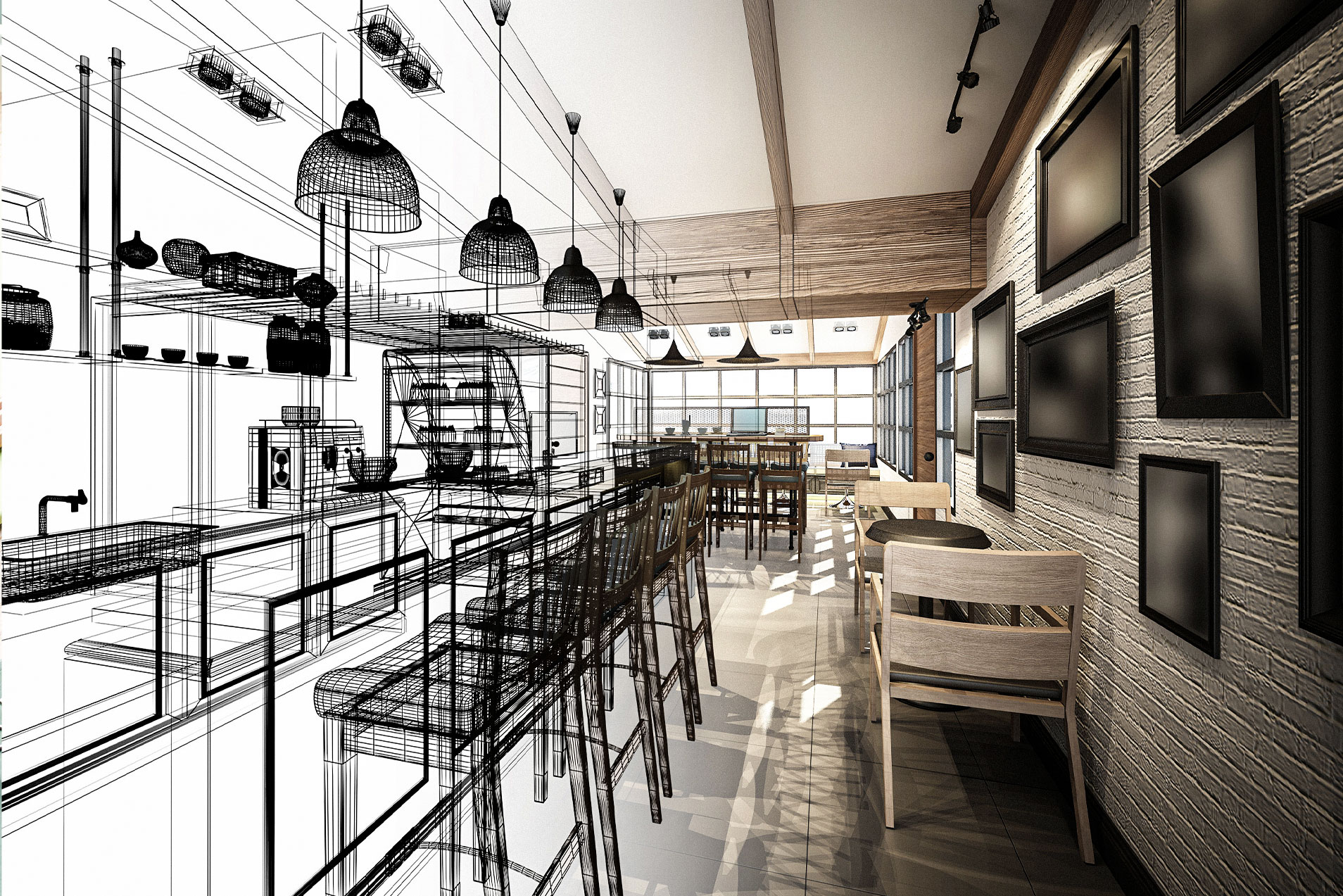
Key Takeaways
NEWS & VIEWS
The Latest from Sawdust HQ
Don’t get me wrong, I love Pinterest. Where else could you store all your flatbread recipes alongside that wedding cake topper you must keep in mind for your eventual big day? Tattoos you may or may never get? Pin ‘em. Mocktail recipes featuring apricots? Pin ‘em. Bow ties for your beloved bulldog Bert? Pin ‘em! Pinterest has seemingly everything you could possibly ever need for inspiration just lying in wait to be pinned.
Even in the workplace, as an Interior Designer, I find Pinterest quite useful. For each project or concept we develop, I am able to compile thousands of different sources of inspiration. I can organize them all in one place like a library full of reference books but am able to recall the most crucial of those sources with a click of the mouse. Truly, enough can’t be said as to how great I think the app is, but I cannot help but notice how Pinterest has made what I do as an Interior Designer a bit…confusing.
Perhaps I am misplacing the blame. Perhaps this confusion is due to the onslaught of house flipping HGTV shows or the growing availability of trendy housewares at your local big box stores. Or perhaps I am correct in that it is the same images we see recirculating through the Pinterest streets over and over again that has led me to believe that the concept of Interior Design has become a bit muddled.
Despite all its benefits for Interior Designers, Pinterest would have you believing that Interior Design is about trends and making something look beautiful. But in truth, it is not about using the latest tile or most fashionable color. It is not about replicating the images you see on your boards. It is so much more.
SO WHAT REALLY IS INTERIOR DESIGN?
According to the International Interior Design Association, Interior Design is defined as: “The professional and comprehensive practice of creating an interior environment that addresses, protects, and responds to human need(s). It is the art, science, and business planning of a creative, technical, sustainable, and functional interior solution that corresponds to the architecture of a space, while incorporating process and strategy, a mandate for well-being, safety, and health, with informed decisions about style and aesthetics.”
https://iida.org/about/what-is-interior-design
Like all design disciplines, Interiors address the basic principles of design: balance, contrast, emphasis, shape, scale, repetition, unity, etc. The key difference between other design disciplines and Interiors is in the way the finished product is received. Interior design takes the 2D to the 3D. It is how you experience space.
From raising Doric temples atop the Greek Acropolis to adorning Pharoh’s tombs in ancient Egypt, ever since the dawn of time, people have strived to improve how they experience their built environments. It is understandable when you realize that you can work, eat, sleep, live, and make memories in an Interior Designer’s canvas.
When it comes to SAWDUST’s speciality of hospitality Interior Design, the Interior environment is the most intimate relationship one has to the brands we create. Interiors take the brand from the page to concrete things you can feel, hear, and see all around you. As they say, first impressions are everything, and a successful Interior sets the mood for your entire dining experience. Even the best dishes served in a poorly designed restaurant will leave a bad taste in your mouth. Fortunately, good design can save a chef if they are having a bad day. Likewise, it is the Interior Designer’s responsibility to help combat those restaurant’s bad days, as well as any problems that arise when building a restaurant.
In truth, Interior Design is much more about problem solving than it is about ornamentation. Much more than any beautifully staged photo on Pinterest, the heart of Interior Design lies in the practices of creative critical thinking and problem solving.
My interest in Interior Design is something that has always felt inherent in me. I believe this stems from growing up as a sister to an individual with special needs. From an early age, I experienced how imperfectly spaces can be designed. I saw the struggles my parents faced as they tried to navigate my sister’s wheelchair around tight hallways or through crowded restaurants. Some restaurants we would never think to revisit as there were no corners quiet enough to not upset my sister or tables tall enough to accommodate her chair. For some restaurants, we weren’t able to physically make it through the door. Unsurprisingly, there is no shortage of problems when the world is not built with you in mind.
In truth, Interior Design is much more about problem solving than it is about ornamentation.
For as long as I can recall, I’ve felt compelled to address those issues my family faced and find solutions. But what if I could play a part in fixing those problems all together? What if I could create spaces that were accessible to all? I, like many Interior Designers, especially those at Sawdust, create with the intent to improve the lives of everyone who comes in contact with the spaces we design.

While accessibility concerns hold a personal importance for the SAWDUST Interior Team, our responsibility to problem solve doesn’t stop there. Accessibility is simply one of the many aspects we take into consideration when creating a space. Others include:
Budget: The ever so scary “B” word. Interior Designers work with clients, fabricators, and contractors to curtail costs and keep budgets to agreed upon numbers.
Comfortability: Taking into account the function of a space and its users, Interior Designers ensure comfort is always a priority. Designers use ergonomics and the study of how the body meets the furniture to maintain high levels of comfort.
Efficiency and Productivity: Interior Designers must create designs that work smoothly and improve the productivity of the workers employed in their designed spaces.
Heating and Insulation: Interior Designers work with architects to map out HVAC systems and select thermal insulators to ensure proper retention of heat.
Inclusion: Like accessibility, Inclusive Design practices are vital for Designers to follow. More than just the physical barriers users incur, Designers must account for how users of different ages, abilities, and backgrounds will interact with their designed spaces.
Light Quality and Visibility: From natural to artificial light, an Interior Designer knows the correct light output needed for each type of environment. Designers control the quantity of light, the color temperature, the amount of sun exposure, where shadows will be cast, and just about every aspect when it comes to illuminating a space.
Longevity: Things aren’t built like they used to be, but it is an Interior Designer’s responsibility to make lasting designs and select materials that will stand the test of time. From fabric “rubs,” to the tensile strength of metals, to the wear of a paint finish, Designers must understand how time and use affects their designs.
Profitability: Whether it is maximizing the amount of seats for a restaurant or designing high impact spaces that bring in clientele, Interior Designers are hired by their clients to drive their businesses forward.
Space Planning: One of the key tasks for Interior Designers is assessing physical space and mapping out the most optimal use for it. This is not only about how space is divided up, but about how users move from one division of the space to another.
Sound and Noise Control: Interior Designers, specifically those working in the hospitality and commercial industries, must regulate noise levels. Designers select materials to combat elevated noise and think creatively to come up with innovative acoustical solutions.
Sustainability: Designers are responsible for both carrying out Sustainable Design practices and prioritizing the selection of sustainable materials. Designers must consider everything from recyclability to the energy it takes to ship a material to a build site.
Ventilation: Designers are responsible and must be knowledgeable about how air travels in and out of the space, providing the best air quality for its inhabitants.
So while Pinterest offers an entire library full of inspiration for us Designers, beyond each snapshot pinned on Pinterest is a whole wealth of knowledge infused into every design. With every inspiration pinned comes the opportunity to create something new because Interior Design is so much more than the replication of an aesthetic or trend. With every photo pinned there were undoubtedly problems that had to be creatively solved and needs that were thoughtfully met. It was because an Interior Designer used their knowledge and problem solving skills that that pin was pin worthy in the first place.




